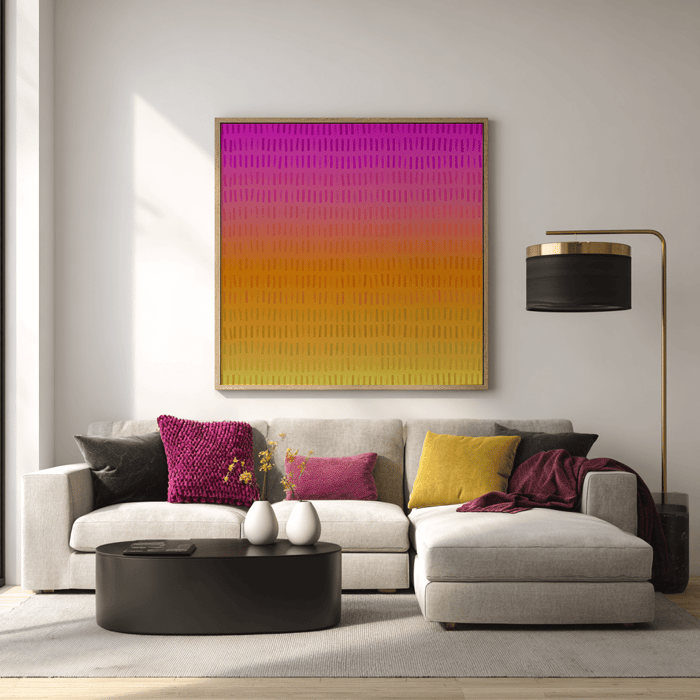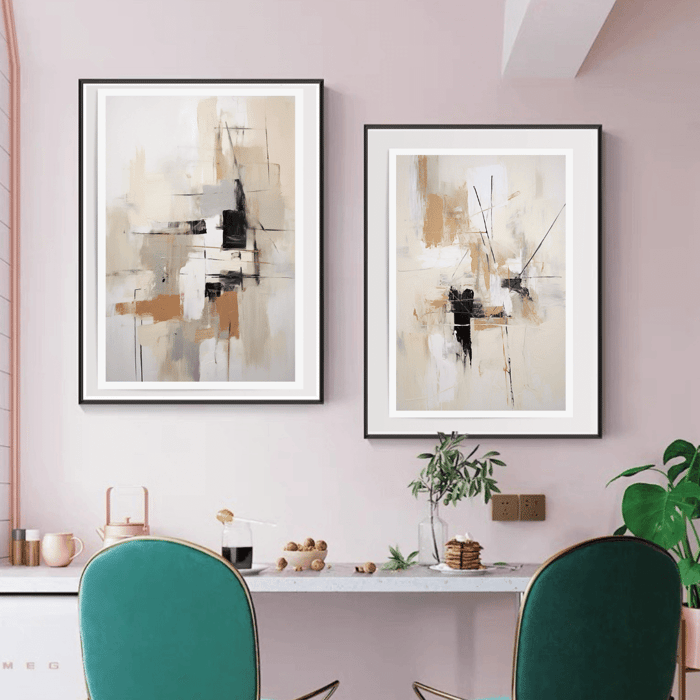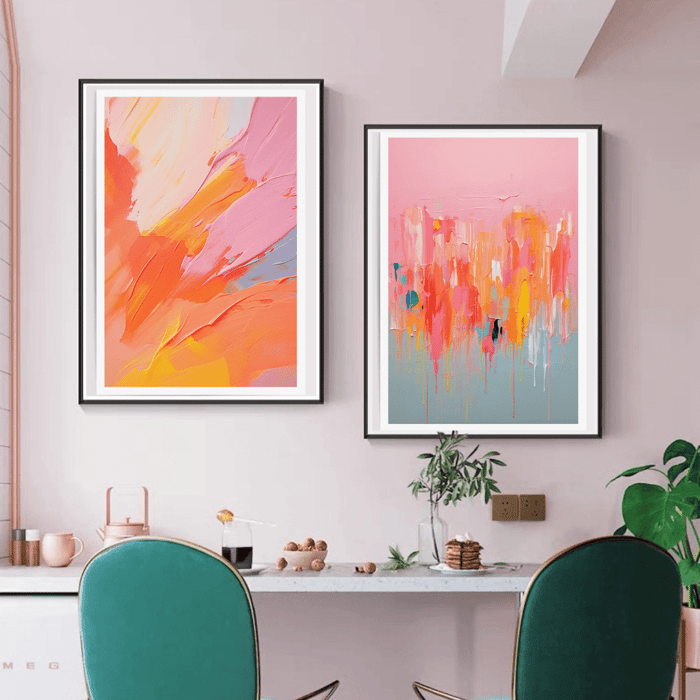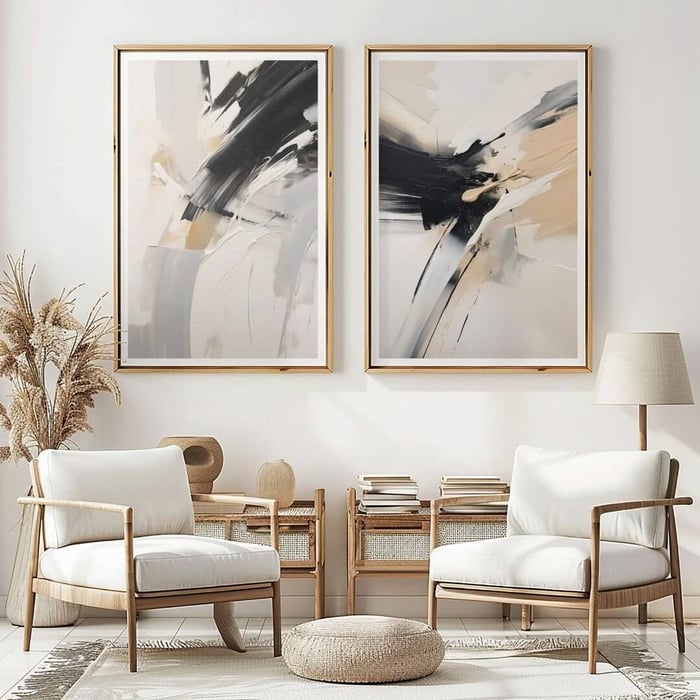When it comes to art and design, one Japanese philosophy has quietly yet powerfully reshaped the way we look at beauty, Wabi Sabi Art.
This timeless aesthetic celebrates imperfection, impermanence, and authenticity, values that feel more relevant than ever in today’s fast-paced, overly polished world. In a culture that often praises the flawless and the filtered, Wabi Sabi gently reminds us that beauty can be found in the cracks, the asymmetry, and the worn edges of life.
Let’s explore what Wabi Sabi art is, how it originated, why it has become so popular in modern interiors, and how Printcasso’s own artist Rimmy channels this philosophy into her unique and soulful creations.
What Wabi Sabi Art Really Means
At its core, Wabi Sabi art is about finding beauty in the imperfect and the incomplete. Rather than chasing symmetry or flawlessness, it embraces raw textures, muted tones, and organic forms that tell a story. A Wabi Sabi artwork might feature rough brushstrokes, subtle asymmetry, or faded colours, each one acting as a reminder that life is beautifully imperfect and that our homes can reflect that same truth.
The key to understanding Wabi Sabi art lies in its ability to evoke a sense of calm. Instead of overwhelming the senses, it whispers. The simplicity of a piece can encourage you to pause, breathe, and notice the details you might otherwise overlook. In many ways, Wabi Sabi is not just an aesthetic, it is a way of living that prioritises presence and appreciation for the moment.
The Origins of Wabi Sabi
The concept of this ancient art comes from Zen Buddhism and Japanese tea ceremonies dating back to the 15th and 16th centuries. Originally, “wabi” referred to simplicity and humility, while “sabi” referred to the beauty of aging and natural wear. Together, they formed a design philosophy that values authenticity over perfection.
In art, this manifested as simple, hand-crafted objects and paintings that reflected nature, transience, and the quiet elegance of imperfection. A cracked teacup, a weathered piece of pottery, or a hand-painted scroll with faded ink were not considered damaged or inferior. Instead, they carried the spirit of time and use, embodying stories that added to their beauty.
Over the centuries, this philosophy moved beyond ceramics and tea rituals into architecture, landscaping, and visual art. Today, it continues to inspire creatives across the world who want to bring honesty, nature, and imperfection into their work.
Why Wabi Sabi Art is So Popular Today
In a world of Instagram filters, fast furniture, and glossy perfection, Wabi Sabi art feels like a breath of fresh air. Its popularity stems from the growing desire to live more mindfully, sustainably, and authentically.
Modern life often feels chaotic, with homes crammed full of things and schedules packed with endless commitments. Wabi Sabi art offers an antidote. Its quiet colours and imperfect textures invite us to slow down. It creates a sense of stillness in the home, reminding us that not everything needs to be perfect to be beautiful.
There is also a deep connection between Wabi Sabi art and sustainability. By valuing natural materials and celebrating the marks of time, it stands in opposition to throwaway culture. A piece of Wabi Sabi-inspired art is not about chasing trends but about creating timeless spaces that will continue to feel harmonious for years to come.
Another reason for its popularity lies in how seamlessly it works with interior design trends we love today. Whether it is Japandi interiors, modern Australian living spaces, or simple minimalist homes, Wabi Sabi art feels like it belongs. Its subtle hues, soft textures, and imperfect balance add warmth to spaces that might otherwise feel too stark or cold.
And perhaps most importantly, Wabi Sabi art creates an emotional connection. A piece that carries the philosophy of Wabi Sabi reminds us of our own lives, imperfect, ever-changing, and deeply human. It feels authentic in a way that mass-produced prints never can.
Rimmy’s Talent for Creating Art
At Printcasso, Rimmy has an exceptional gift for channeling the spirit of Wabi Sabi into her artwork. Her pieces often feature calming palettes, organic brushstrokes, and a sense of quiet balance. Each brushstroke feels intentional yet unforced, reflecting the natural rhythm of life.
What makes Rimmy’s Wabi Sabi-inspired art special is how it blends traditional Japanese principles with a fresh, contemporary twist. While the foundation is rooted in the centuries-old philosophy, her interpretation adds a lightness and modernity that makes the art perfect for today’s homes.
Every print feels like a moment of stillness. Whether it is a soft blend of muted greys and browns, or a composition that leaves space for the eye to wander, her work creates a sense of peace. For those seeking calm, grounding, and authenticity, Rimmy’s art feels like a window into a quieter, more mindful world.
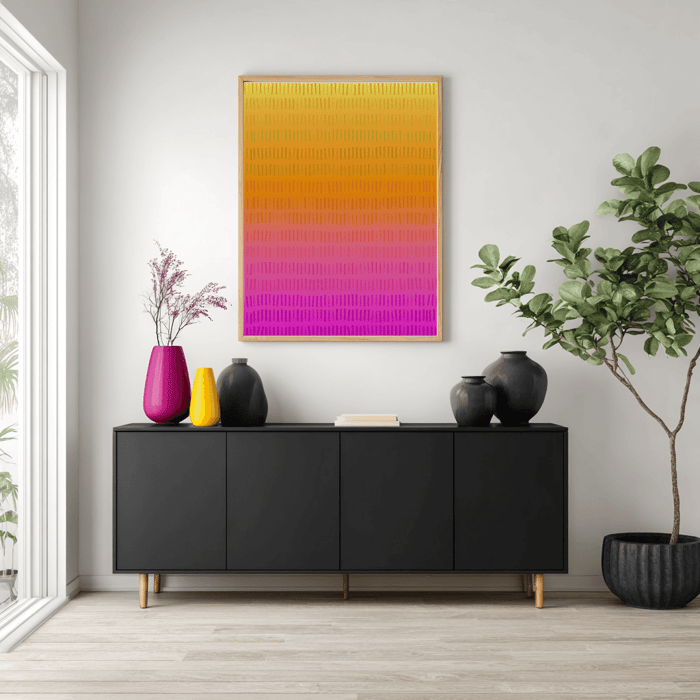 Bringing Wabi Sabi Art Into Your Home
Bringing Wabi Sabi Art Into Your Home
Incorporating Wabi Sabi art into your home is a simple yet powerful way to create harmony in your space. You don’t need to completely redesign your interiors or embrace an entirely minimalist lifestyle to enjoy the benefits. Even a single piece can shift the atmosphere of a room.
Try pairing Wabi Sabi prints with natural wood, stone, or linen textures to create a layered look that feels warm and organic. A gallery wall with slightly asymmetrical spacing can reflect the lived-in charm of the philosophy, reminding you that homes are meant to be enjoyed, not perfected. Choosing artworks with muted tones like soft greys, earthy browns, and calming neutrals can bring a sense of quiet balance to a busy or cluttered space. And most importantly, allow negative space around the art. The breathing room not only highlights the piece but also echoes the philosophy of simplicity and restraint.
Wabi Sabi is not about emptiness, but about presence. It asks us to slow down and savour what is in front of us. In your home, that might look like a single canvas on a blank wall, a textured piece above the dining table, or a soft-toned print that welcomes you at the entryway.
The Timeless Appeal of Wabi Sabi
Wabi Sabi art is more than an aesthetic trend. It is a philosophy that reminds us to embrace the imperfect beauty of life. By choosing art that reflects this timeless principle, you bring depth, calm, and authenticity into your home.
Through her unique style, Rimmy has mastered the art of translating Wabi Sabi into contemporary prints that feel both soulful and stylish. Her work captures the essence of this ancient Japanese philosophy while making it relevant for the way we live today.
It is no wonder that Wabi Sabi art has become one of the most popular design trends across modern interiors worldwide. In a time when we all crave more authenticity and meaning, its message feels timeless.
👉 Explore Rimmy’s Wabi Sabi-inspired art collection at Printcasso.com and bring the beauty of imperfection into your home today.

